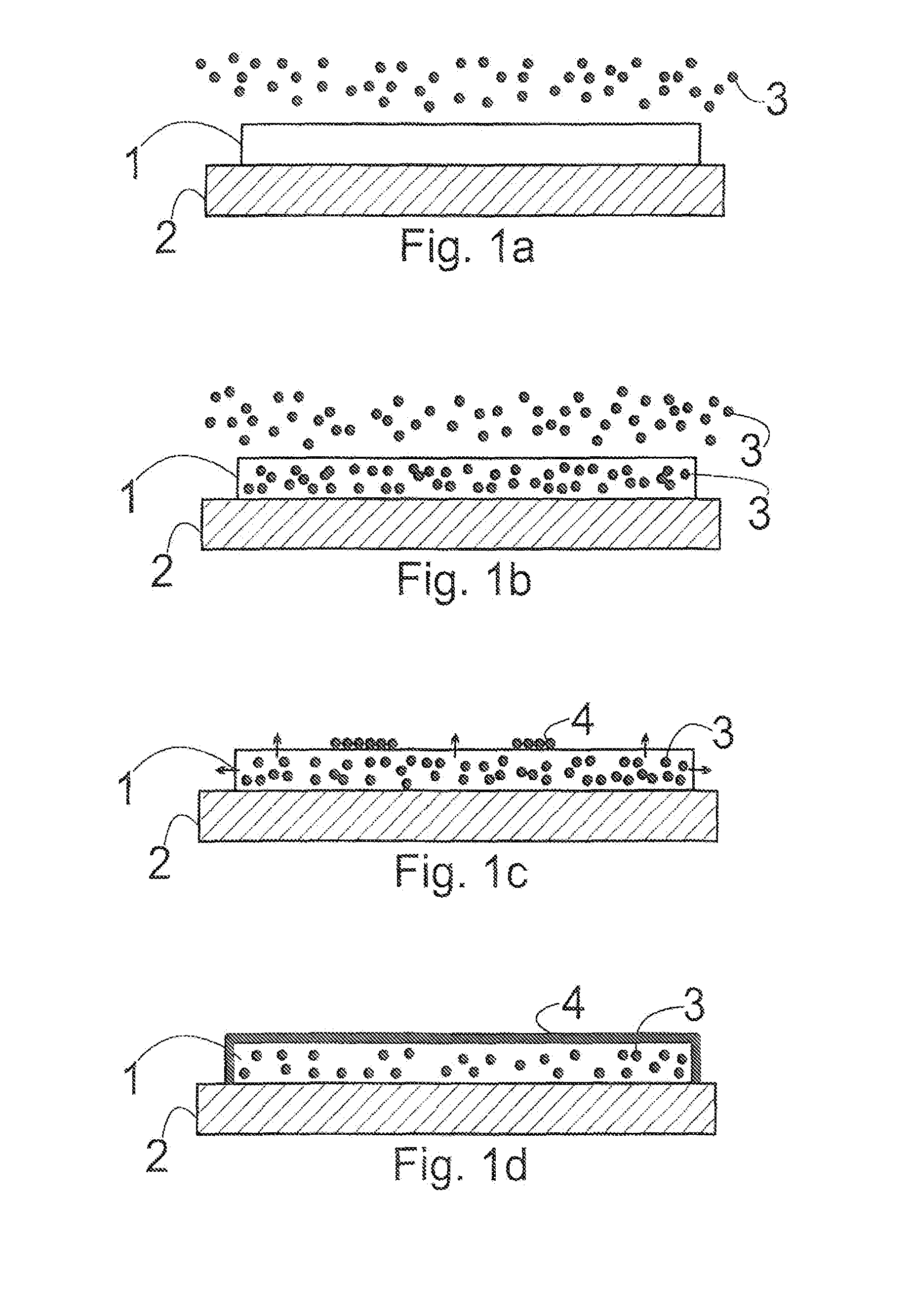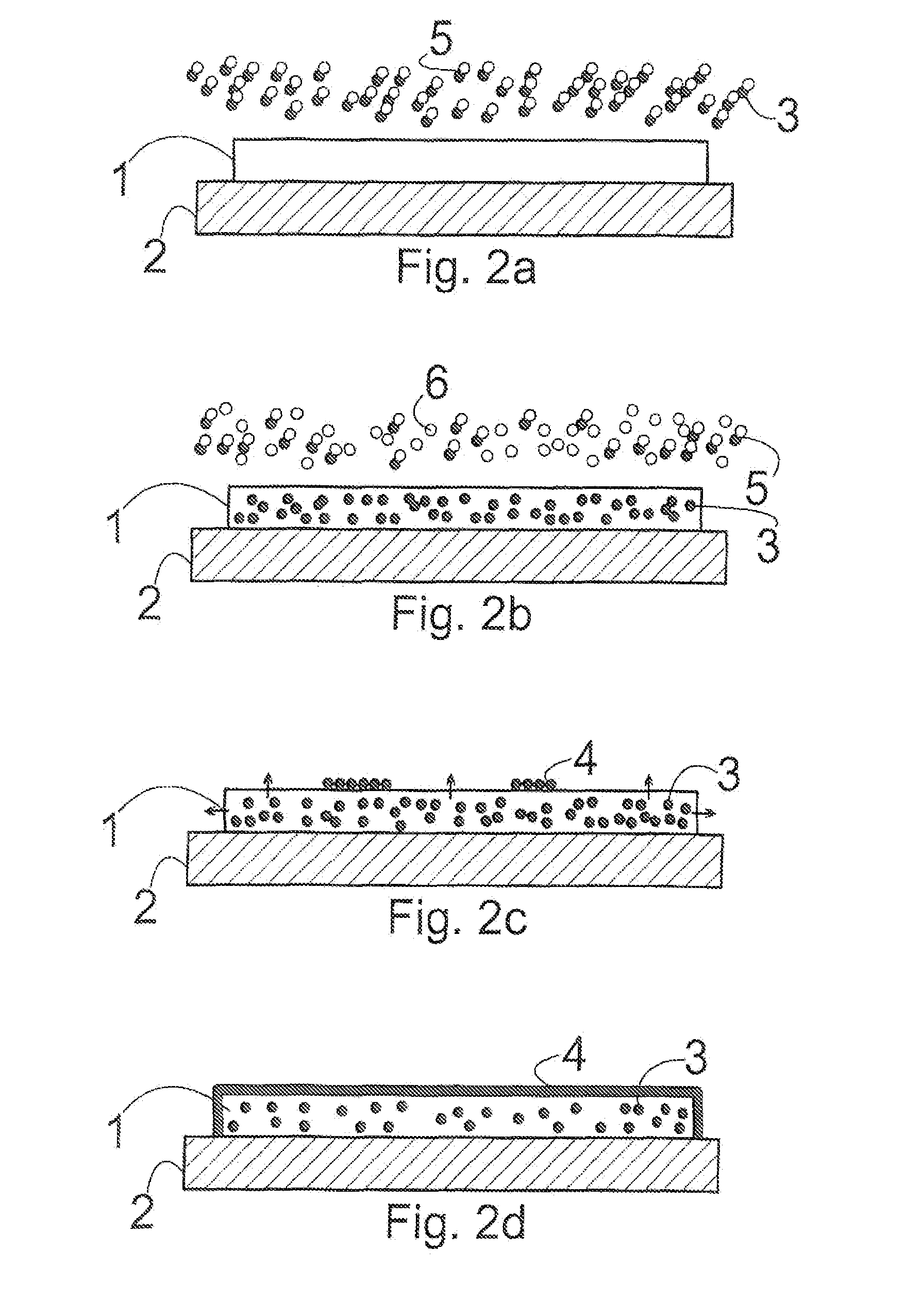Crystalline surface structures and methods for their fabrication
- Summary
- Abstract
- Description
- Claims
- Application Information
AI Technical Summary
Benefits of technology
Problems solved by technology
Method used
Image
Examples
examples
[0054]Example 1 pertains to graphene nanoribbons synthesized from a gaseous carbon precursor on an iron template 1, according to one embodiment of the invention. In this example, iron is deposited on a substrate 2 by, for instance, sputtering in the desired pattern, for instance in a ribbon. The iron deposit template 1 on the substrate 2 is then placed in a reaction environment into which a gaseous carbon source, CO precursor in this case (an organic precursor or a hydrocarbon, such as alcohol vapor or methane are also suitable), is introduced. The conditions in the reaction environment are then modified by elevating the temperature such that the carbon element 3 from the carbon precursor is released from the precursor 5 and diffuses into the iron ribbon template 1 for a period of time, such that the template 1 becomes saturated with carbon. The carbon (the element 3) can be released in the gas phase and then diffuse or migrate into the iron deposit as would be the case for, for ins...
PUM
| Property | Measurement | Unit |
|---|---|---|
| Temperature | aaaaa | aaaaa |
| Partial pressure | aaaaa | aaaaa |
| Angle | aaaaa | aaaaa |
Abstract
Description
Claims
Application Information
 Login to View More
Login to View More - R&D
- Intellectual Property
- Life Sciences
- Materials
- Tech Scout
- Unparalleled Data Quality
- Higher Quality Content
- 60% Fewer Hallucinations
Browse by: Latest US Patents, China's latest patents, Technical Efficacy Thesaurus, Application Domain, Technology Topic, Popular Technical Reports.
© 2025 PatSnap. All rights reserved.Legal|Privacy policy|Modern Slavery Act Transparency Statement|Sitemap|About US| Contact US: help@patsnap.com



